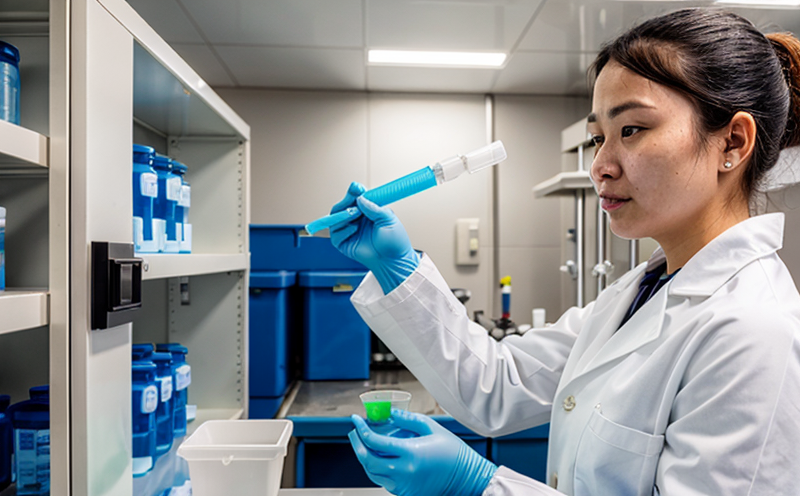USP Total Aerobic Microbial Count Testing
The USP Total Aerobic Microbial Count (TAMC) test is a critical procedure in pharmaceutical manufacturing, designed to quantify the total number of aerobic microorganisms present in drug products. This test ensures that drug formulations meet regulatory standards for sterility and safety, thereby protecting patient health.
During this process, samples from various stages of production are subjected to controlled incubation conditions where aerobic bacteria grow under specified temperature and humidity levels. After a prescribed period, the growth is quantified using appropriate methods such as colony-forming unit (CFU) counting on agar plates or other suitable media.
Accurate TAMC testing requires stringent quality control measures at every stage of sample handling to minimize contamination risks. Proper specimen preparation involves aseptic techniques and precise dilution steps that ensure representative samples are analyzed. Advanced laboratory equipment like automated plate readers can enhance efficiency by providing faster, more consistent results.
The FDA and USP guidelines specify strict protocols for conducting TAMC tests, emphasizing the importance of adhering to these procedures rigorously. Compliance with international standards ensures reliability across global markets and builds trust among stakeholders involved in drug development and manufacturing processes.
Real-world applications of TAMC testing extend beyond just compliance; it also serves as an essential tool for process optimization within pharmaceutical companies. By identifying potential sources of microbial contamination early on, manufacturers can implement corrective actions promptly to maintain product quality consistently.
In addition to its role in ensuring drug safety and efficacy, TAMC testing plays a crucial part in maintaining regulatory compliance throughout the supply chain. It helps identify any deviations from expected levels which could indicate issues related either during manufacturing or storage phases.
Quality and Reliability Assurance
The reliability of TAMC results is paramount for maintaining consistent product quality across different batches. Implementing robust Quality Control (QC) measures ensures that all tests adhere strictly to defined protocols. Regular calibration of instruments used in the analysis helps maintain accuracy over time.
Proper training and certification of personnel involved in performing these tests contribute significantly towards achieving reliable outcomes. Cross-training teams not only enhances skill sets but also fosters flexibility when faced with varied challenges during operations.
Additionally, implementing strict sterility protocols at all stages of sample handling minimizes the risk of introducing contaminants into tested batches, thereby enhancing the overall integrity of test results.
Customer Impact and Satisfaction
Meeting regulatory requirements through rigorous testing like TAMC contributes directly to customer satisfaction by delivering safe and effective medications. When manufacturers demonstrate their commitment to high standards, it fosters trust among healthcare providers and patients alike.
Better quality control translates into fewer recalls due to contamination issues, reducing costs associated with rework or disposal of affected batches. This financial efficiency ultimately benefits customers who receive reliable products at reasonable prices without compromising on safety.
Furthermore, compliance with international standards such as USP ensures that pharmaceutical firms meet global expectations consistently, opening up opportunities for broader market penetration and stronger partnerships globally.
Competitive Advantage and Market Impact
In today's competitive landscape, maintaining superior product quality is vital for staying ahead of competitors. Consistently meeting or exceeding regulatory requirements positions companies favorably in the eyes of regulators and consumers alike.
Predictability in testing results allows manufacturers to make informed decisions regarding process improvements more effectively than those who rely on less stringent methods. This proactive approach can lead to innovations that set new benchmarks for industry standards.
By leveraging advanced technologies and methodologies, firms can differentiate themselves by offering faster turnaround times with equally accurate outputs. Such agility in responding to market demands enhances brand reputation and customer loyalty.





